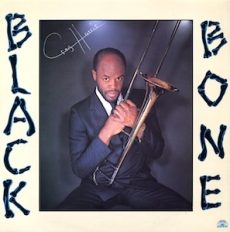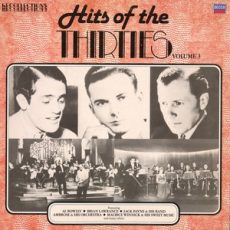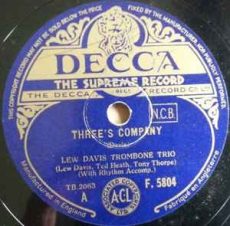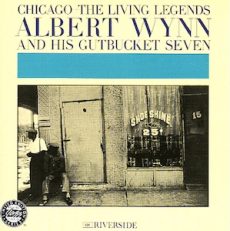
Daily Dose Of Jazz…
Craig S. Harris was born September 10, 1953 in Hempstead, New York. He graduated from the music program at State University of New York at Old Westbury and was influenced by its founder and director Makanda Ken McIntyre. He moved to New York City in 1978 established him with trombonists Ray Anderson, Joseph Bowie, and George E. Lewis.
He first played alongside another of his teachers at SUNY, baritone saxophonist Pat Patrick, in the Sun Ra Arkestra for two years. Harris then embarked on a world tour in 1979 with South African pianist Abdullah Ibrahim, formerly known as Dollar Brand. While on tour in Australia, he discovered the indigenous Australian wind instrument the didgeridoo, and added it to the collection of instruments he plays.
Craig subsequently performed with progressive musicians David Murray, Beaver Harris, Don Pullen, Sam Rivers, Lester Bowie, Cecil Taylor, Muhal Richard Abrams, Charlie Haden and many others, He also played in Lena Horne’s Broadway orchestra for a year. Along with Mark Isham composed the soundtrack for the 2021 film Judas and the Black Messiah.
He led his own ensembles, performed internationally and has recorded several albums. As leader, Harris. For the latter, he recorded with two groups. The Tailgater’s Tales was a quintet with clarinetist Don Byron, trumpeter Eddie Allen, Anthony Cox on double bass, and Pheeroan akLaff on drums. Harris’s large ensemble Cold Sweat was a tribute to the music of James Brown.
Trombonist Craig Harris, who has recorded since 1983 for India Navigation, Soul Note and JMT, continues to pursue his career.
More Posts: bandleader,history,instrumental,jazz,music,trombone
Daily Dose Of Jazz…
Mark Jay Levine was born on October 4, 1938 in Concord, New Hampshire and began playing the piano at the age of five, trombone in his early teens. Attending Boston University, graduating with a degree in music in 1960, he also studied privately with Jaki Byard, Hall Overton and Herb Pomeroy.
Moving to New York City in the Sixties he freelanced and then played with musicians Houston Person, Mongo Santamaría, and Willie Bobo from 1971 to 1974. Levine then moved to San Francisco, California and played with Woody Shaw for two years. His debut album was made as a leader for Catalyst Records in 1976.
He went on to play with the Blue Mitchell/Harold Land Quintet, Joe Henderson, Stan Getz, Bobby Hutcherson, Luis Gasca, and Cal Tjader. From 1980 to 1983, he concentrated on valve trombone, but then returned to playing mainly the piano. He then led his own bands, and recorded for Concord as a leader in 1983 and 1985. From 1992 Mark was part of Henderson’s big band. He created a new trio in 1996 and recorded it for his own, eponymous label. His Latin jazz group, Que Calor, was formed in 1997.
He put on his educator hat in 1970, teaching in addition to private lessons at Diablo Valley College, Mills College, Antioch University in San Francisco, San Francisco Conservatory of Music, Sonoma State University, and the JazzSchool in Berkeley. Levine wrote two method books: The Jazz Piano Book, and The Jazz Theory Book.
Pianist, trombonist, composer, author and educator Mark Levine, whose album Isla was nominated for a Grammy Award for Best Latin Jazz Album, died of pneumonia on January 27, 2022 at the age of 83.
Get a dose of the musicians and vocalists who were members of a global society integral in the making and preservation of jazz for over a hundred and twenty-five years…
Mark Levine: 1938~2022 | Clarinet, Composer, Educator, Director, Producer
More Posts: author,bandleader,composer,educator,history,instrumental,jazz,music,piano,trombone

Daily Dose Of Jazz…
Leslie Priestley Carew was born on August 15, 1908 in London, England but spent his formative years in Shipley, Yorkshire. The son of theatrical parents, it wasn’t till after working in the local mills in his post-school years that he found himself drawn to music and the trombone, upon which he progressed rapidly.
Known to the music world as Les, he began playing in dance bands and eventually returned to London and caught the eye and ear of Jack Hylton. In the 1930s he became a featured trombonist in the Jack Hylton Orchestra during their international heyday performing all over Europe.
He was known for his comedic performances, as an actor and a natural comedian, Carew appeared with his Hylton bandmates in films She Shall Have Music (1935), The Playboy (1938) and Calling All Stars (1937).
Leaving Hylton in the Forties he added vocals to his performance arsenal and recorded as a member of Bert Ambrose and His Orchestra. By the time World War II ensued, military service was curtailed by health deficiencies, and during the latter part of it he led the Ambrose Octet.
After the war Carew freelanced in London with Geraldo, Eric Robinson, Mantovani, George Melachrino and many others. In 1970 his first wife, Elsie, died and he subsequently married the music lecturer Avril Dankworth – founder of the children’s music camps bearing her name – a partnership which lasted the rest of his life.
Trombonist Les Carew died of Parkinson’s disease, shortly after completing his autobiography in 1994 in St Albans, Hertfordshire, England.

Daily Dose Of Jazz…
Lew Davis was born on August 4, 1903 in London, England. His early childhood and education is unknown or when he picked up the trombone. He began playing with Jack Hylton And His Orchestra as the only trombonist on recordings from 1923 to 1928. He then joined Leo Vauchant before moving on to become a part of Paul Fenhoulet’s band.
The Thirties saw Lew with Ray Noble, Ambrose & His Orchestra, Lew Stone & The Monseigneur Band, as well as his own Lew Davis Trombone Trio. He went on to work with Benny Carter And His Orchestra, Jack Harris & His Orchestra, Ronnie Munro & His Orchestra, Savoy Hotel Orpheans, and Louis de Vries And His Rhythm Boys.
Trombonist Lew Davis dided in London on November 24, 1986.
More Posts: bandleader,history,instrumental,jazz,music,trombone

Daily Dose Of Jazz…
Albert Wynn was born on July 29, 1907 in New Orleans, Louisiana but grew up in Chicago, Illinois where he began his professional career as a trombonist. His first appearance on record in 1926 backing Ma Rainey and the following year he played and recorded in St. Louis, Missouri with Charlie Creath.
Wynn went on to work with Earl Hines’s band briefly in 1928 before assembling a group of his own. Later that same year he joined the Sam Wooding Orchestra on their European tour and didn’t return to the United States until 1932 when he would live in New York City for a short time before going back to Chicago.
He was a member of Sidney Bechet’s New Orleans Feetwarmers for a stint going on to work with the bands of Jesse Stone, Carroll Dickerson, Richard M. Jones, and the Earl Hines Orchestra once again. During the late 1930’s and early ’40’s Albert played in the big band of Fletcher Henderson and the short lived assembly of Jimmie Noone.
Settling into semi-retirement he ran a Chicago record store and enjoined his final professional band work as a member of Franz Jackson’s Original Jazz All-Stars from 1956 to 1960 and the Gold Coast Jazz Band from 1960 to 1964.
Trombonist Albert Wynn died on May 1, 1973.
More Posts: bandleader,history,instrumental,jazz,music,trombone




